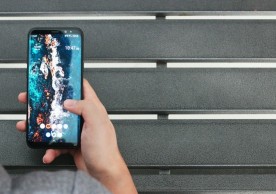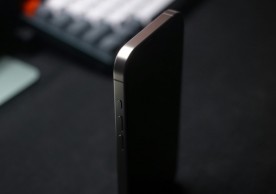Android Devices In Future Could Be Controlled Via Backside Touch
Prarthito Maity email: p.maity@mobilenapps.com
Android from Google is one of the most popular OS ecosystems around with a massive number of users all around the planet, and now it seems like the company is up to even more to offer the best possible experience for its users.
Per reports, Google is said to have submitted a patent that will let its users owing an Android device to control the device using gestures and touches on its back.
However, those who are regularly following the exploits of Google and Android will know that this latest technology is not something new as Apple previously has also submitted a certain patent back in 2006 for future tablets that would deal with the same kind of gesture control.
As far as the concept brought about via this new technology is concerned, it’s quite simple. The concept deals with introducing touch controls to the rear casing of a device, with the control having the ability to be smartly reconfigured, by remembering the last performed action, to allow for quick recall of common functions just by tapping the rear of the phone.
“Google's invention covers simple backside device touch controls that will be applied to future Android devices,” a Patent Bolt report states. The report also says that the image offered for the patent “is a conceptual diagram of an Android smartphone identifying an operation to perform in response to non-touchscreen contact being detected on the backside of the Android device's backside housing.”
Google is hopeful that the new backside touch technology could apply to other future devices such as a tablet, ebook, Chromebook or other devices based on Android. The daily usage scenarios via this include turning a page in a document, skipping over to the next picture in a slideshow, or even playing the next track in a playlist.
The feedback for registering the back-tap could be visual, acoustic, or tactile, and the implementation might also make its way to tablets in the near future. The patent also states as to how the available torque on a computing device can help to indicate a location on the device where contact with the device was received.
“Google adds that the mobile device may provide visual, audible, and/or tactile feedback to the user indicating that the tap input on the backside housing has been detected, such as a click sound, beep or vibration,” the report adds. “Google's patent application was originally filed in Q3 2012 under serial number 593117 and recently published by the US Patent Office.”
© Copyright 2020 Mobile & Apps, All rights reserved. Do not reproduce without permission.more stories from Mobile
-
Google-Backed Glance Launches Pilot of Android Lockscreen Platform in US
Check out the latest from Glance! They're piloting their Android Lockscreen Platform in the US. Don't miss it!
ernest hamilton -
X Plans Smart TV App, Promising Immersive Entertainment Experience
Exciting news! X plans to launch a Smart TV app for an immersive entertainment experience. Stay tuned!
ernest hamilton -
T-Mobile Introduces New 5G Internet Plans for Enhanced Home and Travel Connectivity
T-Mobile unveils new 5G internet plans, promising enhanced home and travel connectivity for customers seeking high-speed internet on the go.
ernest hamilton -
Huawei Aims for Global Expansion of HarmonyOS, Rivaling Android and iOS
Huawei sets sights on global expansion with HarmonyOS, aiming to rival Android and iOS in the competitive mobile operating system market.
ernest hamilton -
Apple Releases Third Betas for iOS 17.5 and iPadOS 17.5, Introducing App Ecosystem Changes and New Features
Stay ahead with the latest updates! Apple rolls out third betas for iOS 17.5 and iPadOS 17.5, bringing exciting app ecosystem changes and new features.
ernest hamilton -
The MIAD 01: Audiophile Brand Moondrop Teases Its First Smartphone
Moondrop, known for audiophile gear, teases its inaugural smartphone, the MIAD 01, promising a unique blend of audio excellence and mobile technology.
ernest hamilton -
Android 15 Could Simplify Notification Channels, Hide Unused Ones
Android 15 aims to streamline notification channels by hiding unused ones, enhancing user experience and decluttering notification settings.
ernest hamilton -
DolphiniOS Reveals Why GameCube and Wii Emulator Won't Be Available in App Store
DolphiniOS developers shed light on why the GameCube and Wii emulator won't be available in the App Store.
ernest hamilton









